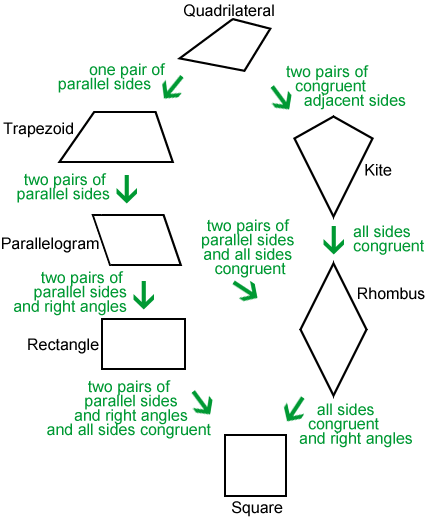Quadrilateral
A quadrilateral is a polygon that has four sides. The following are a few examples.
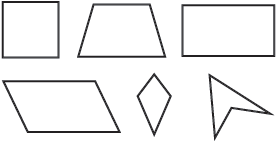
Parts of quadrilateral
Quadrilateral ABCD, shown below, has the following properties:
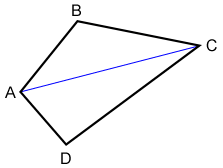
- Four sides: , , , and . Opposite sides do not share a common vertex.
- Four interior angles at each of the vertices: A, B, C, and D. Opposite angles do not share a common side.
- Sum of interior angles equals 360°. A diagonal can be drawn from vertex A above dividing the quadrilateral into two triangles, △ABC and △ADC. Since the sum of the interior angles of a triangle is 180°, the sum of the interior angles for the quadrilateral is 2×180° = 360°.
Special quadrilaterals
Quadrilaterals are widely studied in geometry. They are often categorized further based on their angles and sides.
Parallelogram
A parallelogram is a quadrilateral with two pairs of parallel sides. The opposite angles and sides of a parallelogram are congruent.
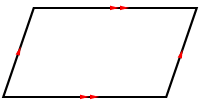
Rectangle
A rectangle is a quadrilateral with four right angles. The opposite sides of a rectangle are congruent and parallel.

Rhombus
A rhombus is a quadrilateral with four congruent sides. The opposite sides of a rhombus are parallel. The opposite angles of a rhombus are congruent.
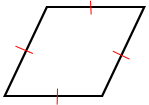
Square
A square is quadrilateral with four congruent sides and four congruent angles. The four angles of a square are right angles. A square is a regular quadrilateral.

Trapezoid
A trapezoid is a quadrilateral with one pair of parallel opposite sides.

Kite
A kite is a quadrilateral with two pairs of congruent adjacent sides.
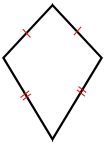
The following diagram summarizes the various quadrilaterals described above.
